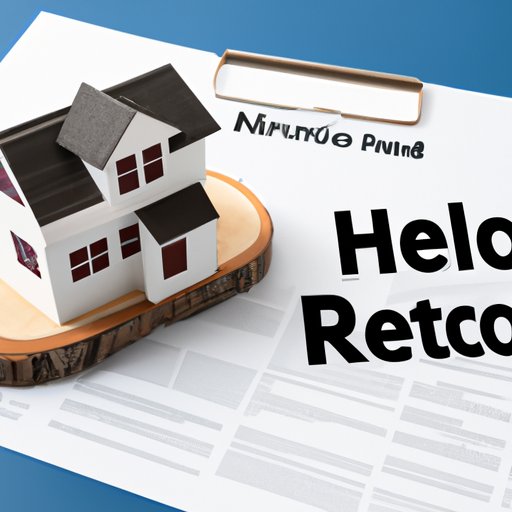Introduction
A home equity line of credit (HELOC) can be a great way to finance an investment property. It allows you to leverage the equity in your current home or other real estate investments to borrow money for a new venture. However, it’s important to understand the process before taking out a HELOC on an investment property. This article will explore the steps necessary to secure a HELOC for an investment property.
Research Investment Property HELOCs
Before applying for a HELOC, it’s important to understand the basics. A HELOC is a form of revolving credit that is secured by the equity in your home or other real estate investments. It works similarly to a credit card, where you can borrow up to a certain amount and make payments as you go. The amount you can borrow is determined by your loan-to-value ratio, which is calculated using the value of your home or investment property and the amount of debt you have.
In addition to understanding the basics of a HELOC, it’s also important to be aware of the eligibility requirements. Most lenders require that you have at least 20% equity in the property you’re borrowing against. You’ll also need to have good credit and meet the lender’s income requirements. Finally, some lenders may require that you have a history of successful investments.
It’s also important to consider the potential benefits of a HELOC. By leveraging the equity in your home or other properties, you can access funds for an investment without having to liquidate any assets. Additionally, interest rates on HELOCs are typically lower than those on unsecured loans, making them a cost-effective way to finance an investment.
Create a Financial Plan for Your Investment Property
Once you’ve done your research, it’s time to create a financial plan for your investment property. Start by assessing your needs. Consider the type of investment property you’re looking for and the amount of money you’ll need to purchase it. This will help you determine the size of the loan you need.
Next, compare rates and terms offered by different lenders. Look for lenders that offer competitive rates and flexible repayment options. Be sure to read the fine print and understand any additional fees associated with the loan.
Finally, calculate your loan-to-value ratio. This is the ratio of the amount of money you’re borrowing to the value of the property. Lenders use this ratio to determine how much money they’re willing to lend you. Generally, a higher loan-to-value ratio means a higher interest rate.

Shop Around for the Best HELOC Option
Now that you’ve done your research and created a financial plan, it’s time to start shopping around for the best HELOC option. Consider different lenders and the interest rates they offer. Also, be sure to look at any fees they charge and the various repayment options they provide.
When comparing lenders, it’s important to look at more than just the interest rate. Some lenders may charge additional fees or require a higher loan-to-value ratio. Make sure to read the fine print and understand all the terms and conditions before signing on the dotted line.

Secure Financing for Your Investment Property
Once you’ve chosen the best HELOC option, it’s time to secure financing for your investment property. Gather all the necessary documents, such as pay stubs, tax returns, and bank statements. Then, apply for the loan. Most lenders require you to submit an application, along with proof of your income and assets. Once your application is approved, you’ll receive the funds and can begin investing.
Monitor Your HELOC
Once you’ve secured your HELOC, it’s important to monitor your payments and balance. Make sure you make your payments on time each month. Also, keep an eye on your balance to ensure you don’t exceed the limit. Lastly, be aware of how your HELOC impacts your credit score. Paying on time and keeping your balance low can help you maintain a healthy credit score.
Conclusion
Getting a HELOC on an investment property can be a great way to finance a new venture. It’s important to understand the basics of a HELOC, as well as the eligibility requirements and potential benefits. Additionally, create a financial plan for your investment property and shop around for the best HELOC option. Finally, secure financing for your investment property and monitor your payments and balance to ensure you maintain a healthy credit score.
(Note: Is this article not meeting your expectations? Do you have knowledge or insights to share? Unlock new opportunities and expand your reach by joining our authors team. Click Registration to join us and share your expertise with our readers.)
